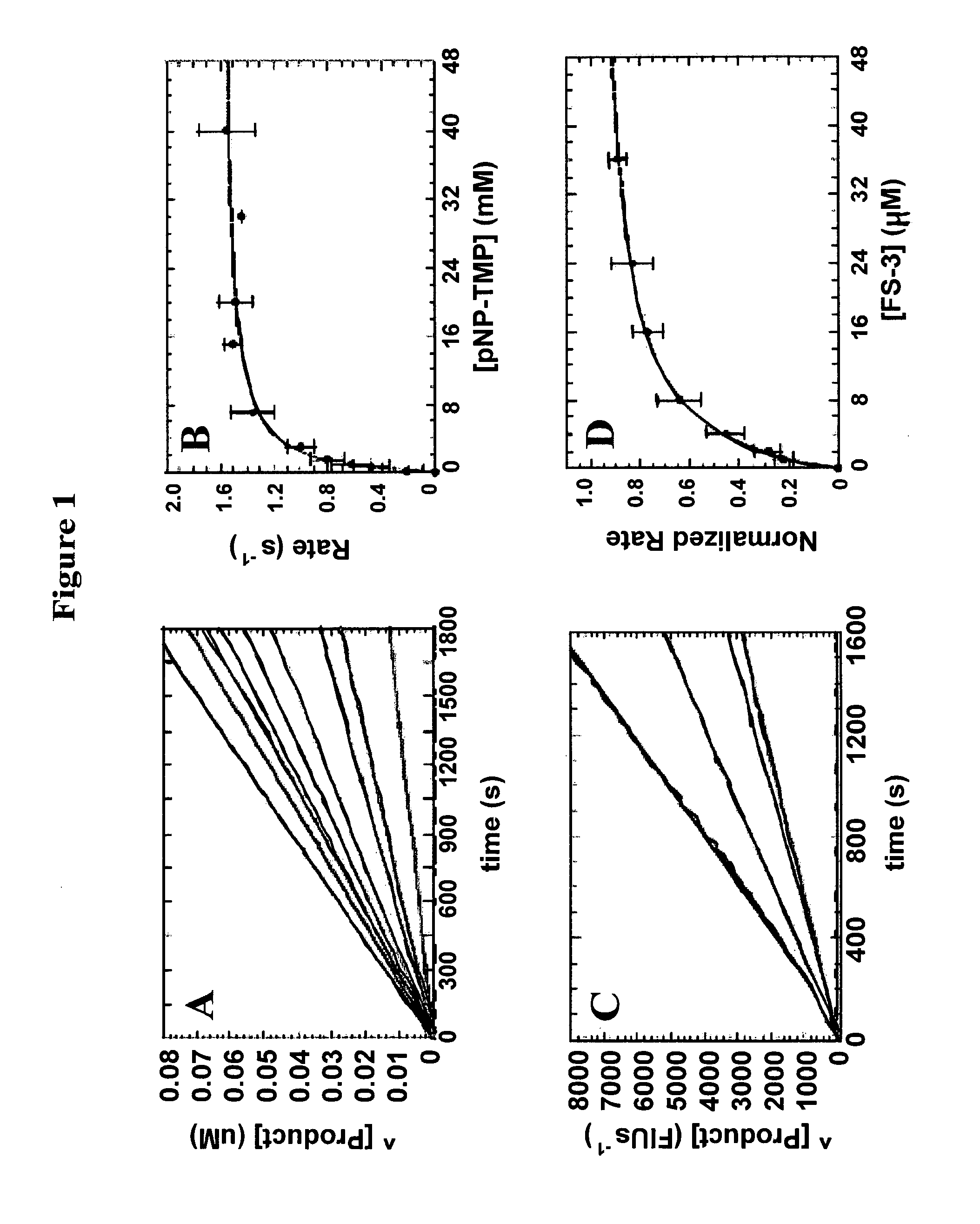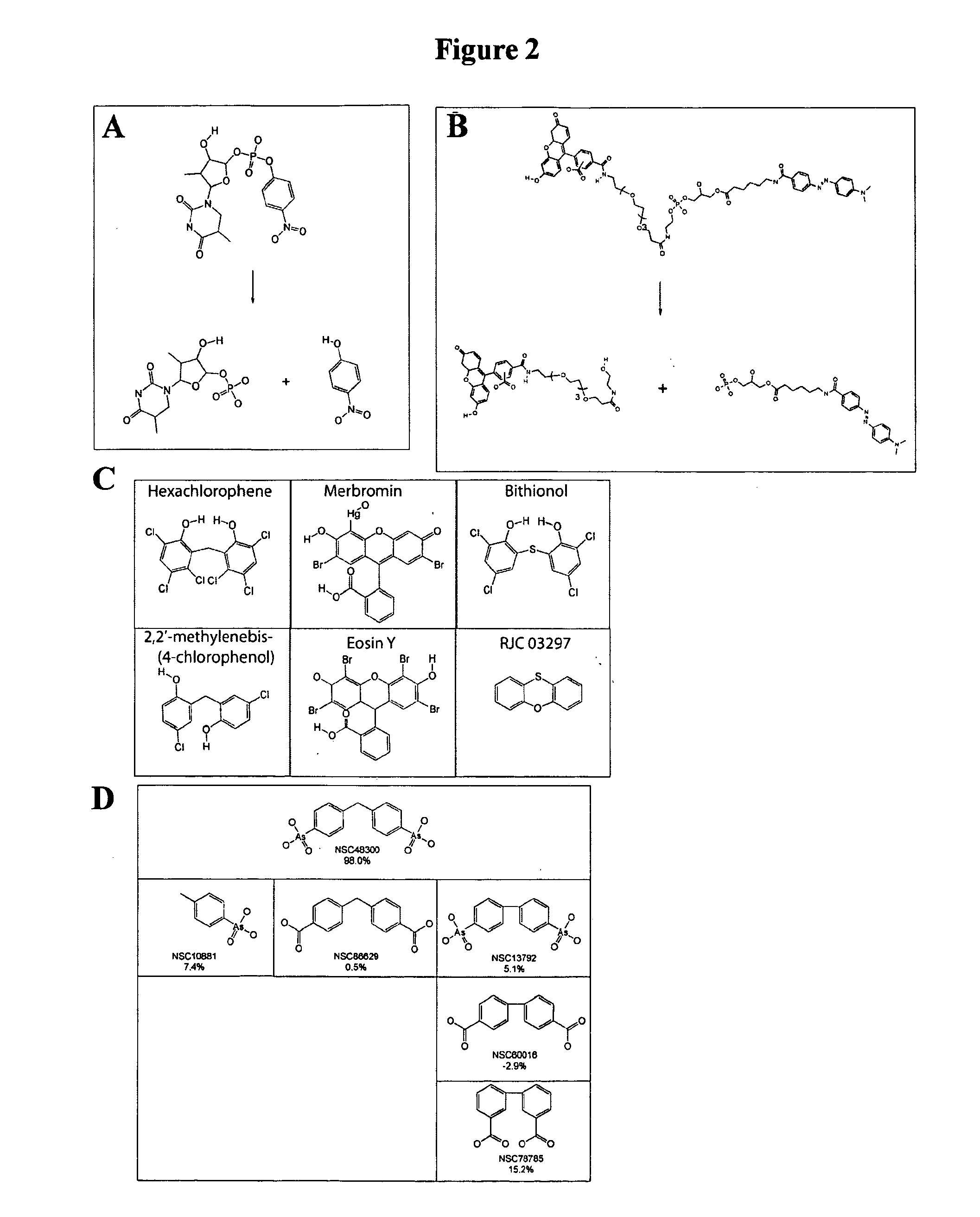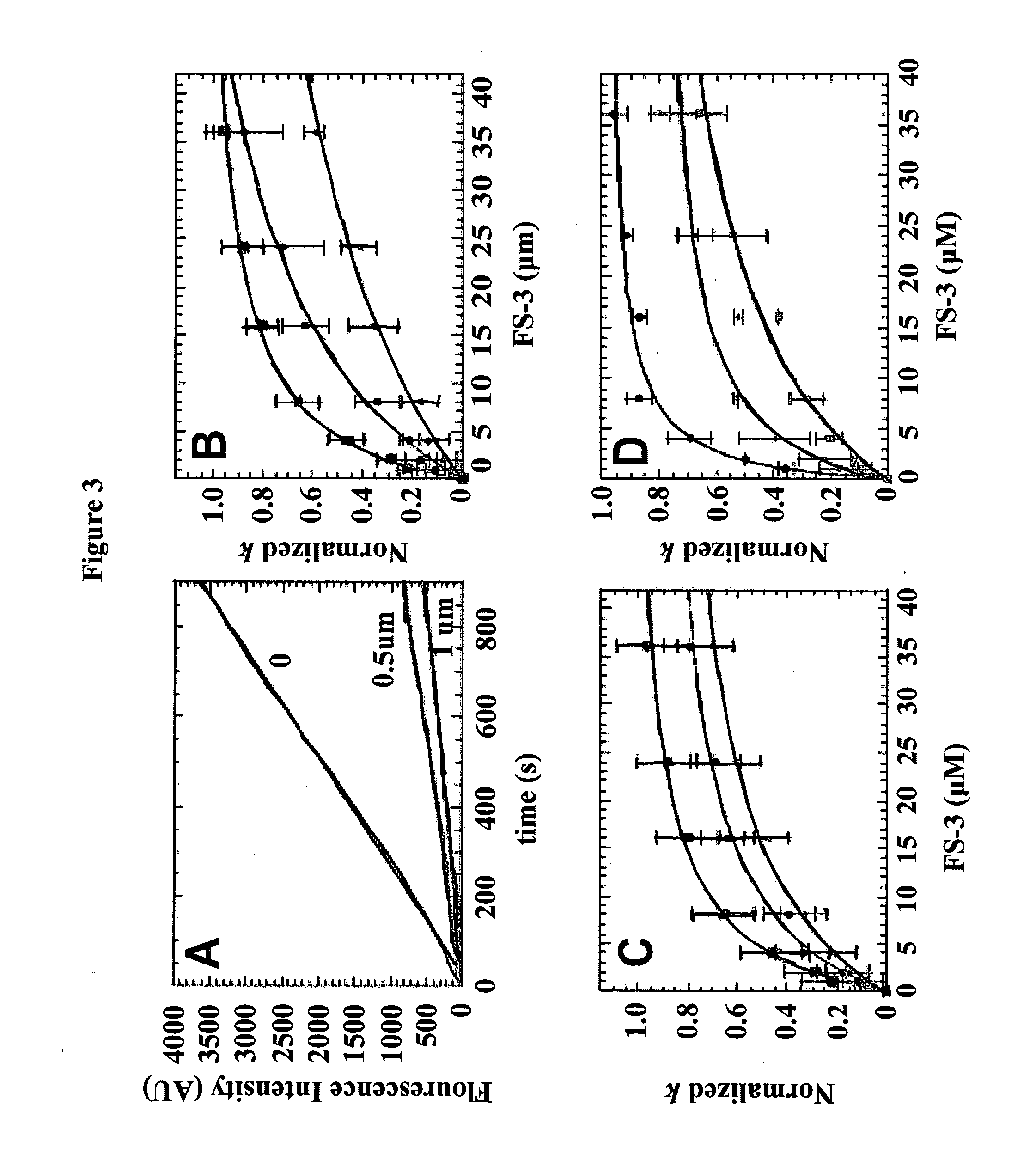Small molecule inhibitors of autotaxin and methods of use
a technology of autotaxin and small molecule inhibitors, applied in the field of compounds, can solve the problems of poorly controlled surgical treatment of metastatic melanoma, unmeasured binding constants of inhibitors, and inability to prevent cancer cell migration, so as to reduce the likelihood of growth and metastasis or inhibit the effect of growth and metastasis
- Summary
- Abstract
- Description
- Claims
- Application Information
AI Technical Summary
Benefits of technology
Problems solved by technology
Method used
Image
Examples
examples
Materials and Methods
[0108]Reagents: All chemicals and reagents were the highest purity commercially available. p-Nitrophenyl 5′-thymidine monophosphate (pNP-TMP) was purchased as a dry powder from Sigma (St. Louis, Mo.). Fluorescent Substrate-3 (FS-3) came from Echelon (Salt Lake City, Utah). Both substrates were freshly dissolved in assay buffer (50 mM Tris, 5 mM KCl, 140 mM NaCl, 1 mM MgCl2, and 1 mM CaCl2, pH 8.0) immediately before use. RJC 03297 was purchased from Maybridge, and NSC 48300 was obtained from the NCI Developmental Therapeutics Program (DTP) Open Chemical Repository (see, http: / / dtp.nci.nih.gov / ). The structure and purity (95%) of NSC 48300 was confirmed by 1H NMR and mass spectroscopy. Analogues of NSC 48300 were identified by performing a substructure search against the NCI Open Chemical Repository collection. Analogues deemed useful for establishing structure-activity relationships were identified and individually requested from the DTP. Hexachlorophene, merbro...
PUM
| Property | Measurement | Unit |
|---|---|---|
| Structure | aaaaa | aaaaa |
| Antimicrobial properties | aaaaa | aaaaa |
| Binding constant | aaaaa | aaaaa |
Abstract
Description
Claims
Application Information
 Login to View More
Login to View More - R&D
- Intellectual Property
- Life Sciences
- Materials
- Tech Scout
- Unparalleled Data Quality
- Higher Quality Content
- 60% Fewer Hallucinations
Browse by: Latest US Patents, China's latest patents, Technical Efficacy Thesaurus, Application Domain, Technology Topic, Popular Technical Reports.
© 2025 PatSnap. All rights reserved.Legal|Privacy policy|Modern Slavery Act Transparency Statement|Sitemap|About US| Contact US: help@patsnap.com



